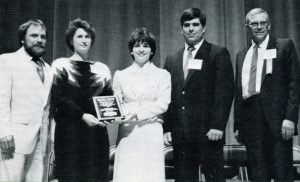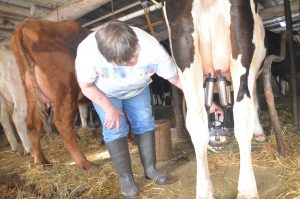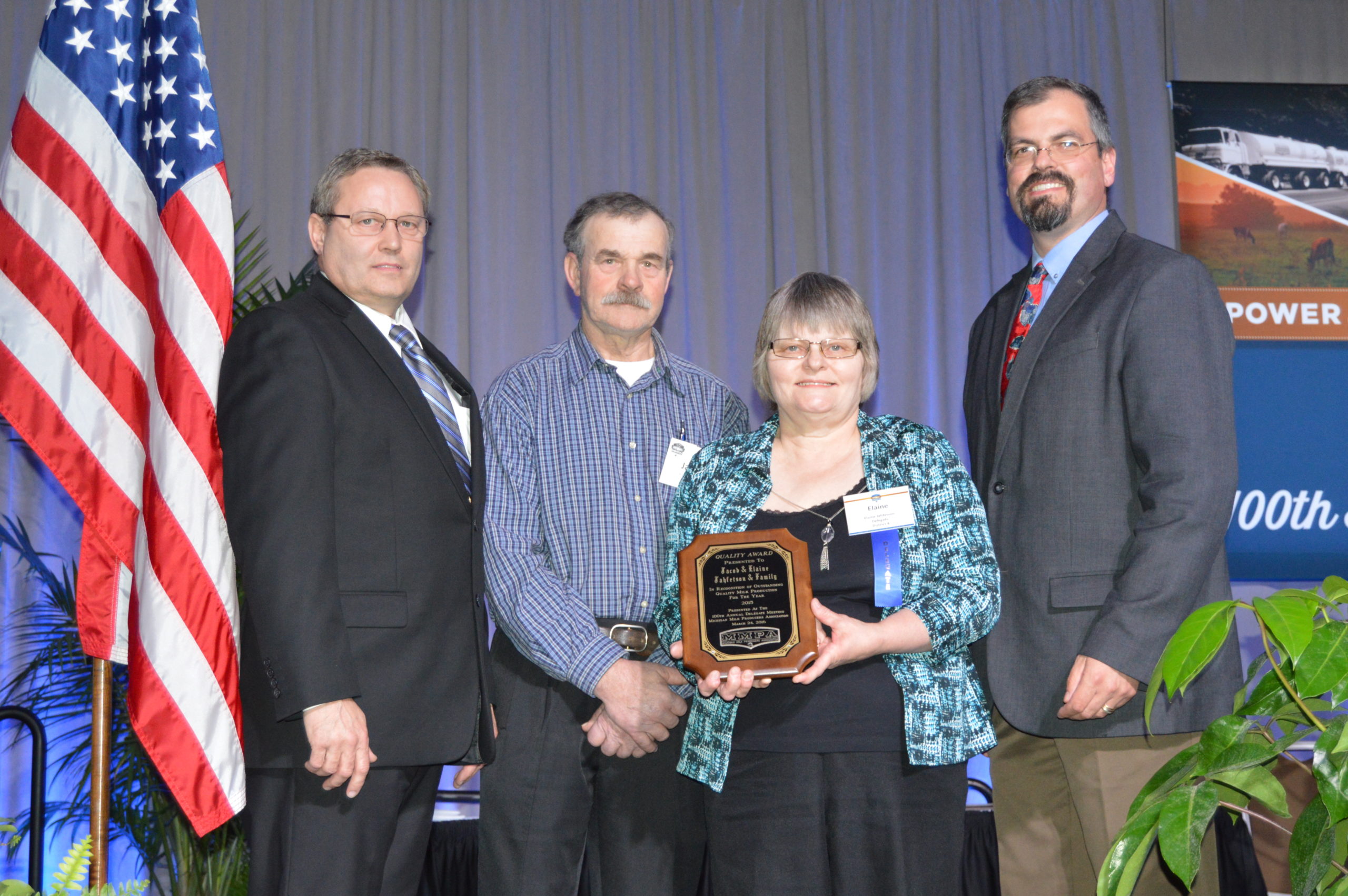“There are many salesmen, researchers, neighbors and even veterinarians who have complex formulas for keeping healthy cows which produce high-quality milk. Yet when you visit the farms recognized for producing the highest quality milk, you won’t see fancy ultra-modern setups or secret formulas put in the teat-dip cups. What you see are two hard-working, dedicated families who have established priorities in such a way that milk quality ranks number one,” a Michigan Milk Messenger article read in May 1990.
Twenty-six years later, that sentiment proves steadfast on Jacob and Elaine Jahfetson’s Upper Peninsula dairy. They don’t have state-of-the-art technology or magic milking procedures, but what they do have is a perfectionist mindset and a true dedication to quality. The Jahfetson’s farm was named the 2015 Top Quality Award Winner for the third consecutive year at the MMPA 100th Annual State Delegate Meeting in March.
The 1990 article detailed the successes MMPA’s first Top Quality Award Winners: Ridge Run Farms and Weber’s Meadow. The farms—both averaging less than 77,500 somatic cell count (SCC) in 1989—set the standards for the coming years of quality award winners.

This year’s winners have consistently produced quality milk year after year, always perfecting their results. In the 2015 fiscal year, the Jahfetsons averaged a SCC of 34,833, pre-incubated bacteria count of 1,500 and raw bacteria count of 1,083. The most recent year’s numbers are an improvement over their winning results in 2014 and 2013, where they averaged a SCC of 40,083 and 54,417, respectively.
“The member who receives the Top Quality Award is an inspiration to all MMPA members. If one member can do it, it shows what is possible for others to achieve,” MMPA Director of Member Services Dean Letter said. “The Jahfetsons are an excellent example of quality producers and continual improvement. The family pays incredibly close attention to every detail, they know exactly what their cows are doing and address any problems immediately.”
The Baraga, Michigan farm milks 25 cows in an 85-year-old stanchion barn. They have a rolling herd average of 19,092 pounds per year, with 685 pounds of butterfat and 585 pounds of protein.
The Jahfetsons take a “perfectionist” approach to milking. They first wash the udder using Bac-Drop—a phosphoric-based solution—mixed with water and use Sani-Prep towels to wipe and clean the teats thoroughly. The unit is attached only when the teats are completely clean. When the milk stream lessens, they release the vacuum and pull the unit straight down. Then they post dip the teats with iodine-based I-deal. The unit is dipped in a mixture of sanitizer and water and allowed to drip.
“Most bacteria enters the udder when milking, so the teats need to be absolutely clean. We teat dip after to prevent bacteria from entering the udder after milking when the cow wants to lay down,” Elaine Jahfetson advises. “It can be good to go fast, but it’s more important to be thorough and ensure the udders are clean before proceeding. When you’re focused on speed during milking, you will see more cases of mastitis and therefore lose income.”
And Letter notes the importance of attention to detail. “What makes the difference in quality is what farmers are going to do day in and day out. Monitoring the herd, cattle housing, nutrition and addressing issues, it’s the little details. You have to sweat the small stuff,” Letter attests.
Over the last decade and a half, the Jahfetsons sharpened their quality figures. In July 2000, their SCC was 435,000, raw bacteria count was 16,000 and pre-incubated count was 460,000. Since understanding their quality issues, their counts have dramatically dropped.
“There are three important things we did to improve our quality: getting rid of chronic cows, checking the vacuum level and getting everyone on the same page,” Jahfetson explains. “We used to treat all of our cows with infections, but we found the same problems would return after the cow was treated. Now we address any concern immediately and cull if the issue is chronic. We also found the vacuum level was too high in our milking units. If the pressure is too high, it will cause teat end damage and allow bacteria to enter the udder. It’s also important all workers are working toward the same goal and following the right procedures on the farm.”

The couple, farming since 1982, plan to retire later this year. Jahfetson views winning the Top Quality Award for the third time as “icing on the cake” in their last year before retirement and during MMPA’s 100th Anniversary.
And throughout MMPA’s century of existence, all farmers have developed higher quality milk. Even just 30 years ago, the MMPA SCC average was well over 300,000. Yet every year, farms work day-in and day-out to improve their results and produce a better product.
“MMPA members produce high-quality milk because we have a culture of quality,” says Letter. “There is an expectation of continuous improvement. Our customers expect continuous improvement and our members expect continuous improvement.”
And honing in on the members driving the change, the Jahfetsons rise above the pack. From high SCCs to unprecedented lows, they are persistent improvers.
–Allison Stuby
This article originally appeared in the April 2016 issue of the Michigan Milk Messenger.

